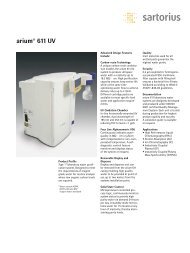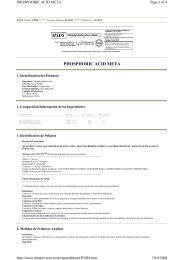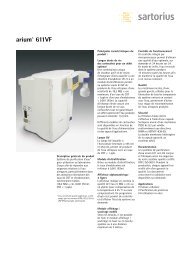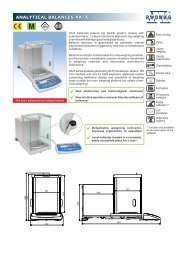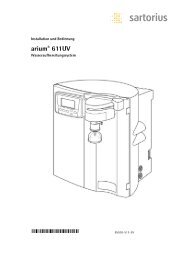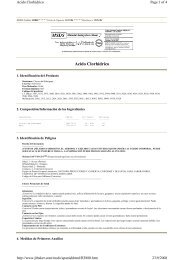Material Safety Data Sheet
Material Safety Data Sheet
Material Safety Data Sheet
Create successful ePaper yourself
Turn your PDF publications into a flip-book with our unique Google optimized e-Paper software.
http://fscimage.fishersci.com/msds/00140.htmPage 2 of 723/9/2008irritation. Aspiration hazard if swallowed. Can enter lungs and cause damage. Prolonged orrepeated contact may dry the skin and cause irritation.Target Organs: Central nervous system, respiratory system, eyes, skin.Potential Health EffectsEye: Produces irritation, characterized by a burning sensation, redness, tearing, inflammation,and possible corneal injury. Vapors cause eye irritation.Skin: May be absorbed through the skin. Repeated or prolonged exposure may cause drying andcracking of the skin.Ingestion: May cause irritation of the digestive tract. May cause central nervous systemdepression, characterized by excitement, followed by headache, dizziness, drowsiness, andnausea. Advanced stages may cause collapse, unconsciousness, coma and possible death due torespiratory failure. Aspiration of material into the lungs may cause chemical pneumonitis, whichmay be fatal.Inhalation: Inhalation of high concentrations may cause central nervous system effectscharacterized by nausea, headache, dizziness, unconsciousness and coma. Causes respiratorytract irritation. May cause motor incoordination and speech abnormalities.Chronic: Prolonged or repeated skin contact may cause dermatitis. Chronic inhalation maycause effects similar to those of acute inhalation. Matsushita et al. exposed human volunteers 6hours/day for 6 days at 500 ppm acetone and found hematologic changes including significantlyincreased leukocyte and eosinophil counts and decreased neutrophil phagocytic activity.Section 4 - First Aid MeasuresEyes: In case of contact, immediately flush eyes with plenty of water for a t least 15 minutes.Get medical aid.Skin: In case of contact, flush skin with plenty of water. Remove contaminated clothing andshoes. Get medical aid if irritation develops and persists. Wash clothing before reuse.Ingestion: Potential for aspiration if swallowed. Get medical aid immediately. Do not inducevomiting unless directed to do so by medical personnel. Never give anything by mouth to anunconscious person. If vomiting occurs naturally, have victim lean forward.Inhalation: If inhaled, remove to fresh air. If not breathing, give artificial respiration. Ifbreathing is difficult, give oxygen. Get medical aid.Notes to Physician: Treat symptomatically and supportively.Section 5 - Fire Fighting MeasuresGeneral Information: If inhaled, remove to fresh air. If not breathing, give artificialrespiration. If breathing is difficult, give oxygen. Get medical aid. As in any fire, wear a selfcontainedbreathing apparatus in pressure-demand, MSHA/NIOSH (approved or equivalent), andfull protective gear. During a fire, irritating and highly toxic gases may be generated by thermaldecomposition or combustion. Use water spray to keep fire-exposed containers cool. Extremelyflammable liquid and vapor. Vapor may cause flash fire. Vapors are heavier than air and maytravel to a source of ignition and flash back. Vapors can spread along the ground and collect inlow or confined areas.Extinguishing Media: Use dry chemical, carbon dioxide, or appropriate foam. Water may beineffective because it will not cool material below its flash point.Flash Point: -20 deg C ( -4.00 deg F)Autoignition Temperature: 465 deg C ( 869.00 deg F)Explosion Limits, Lower:2.5%Upper: 12.8%NFPA Rating: (estimated) Health: 1; Flammability: 3; Instability: 0







